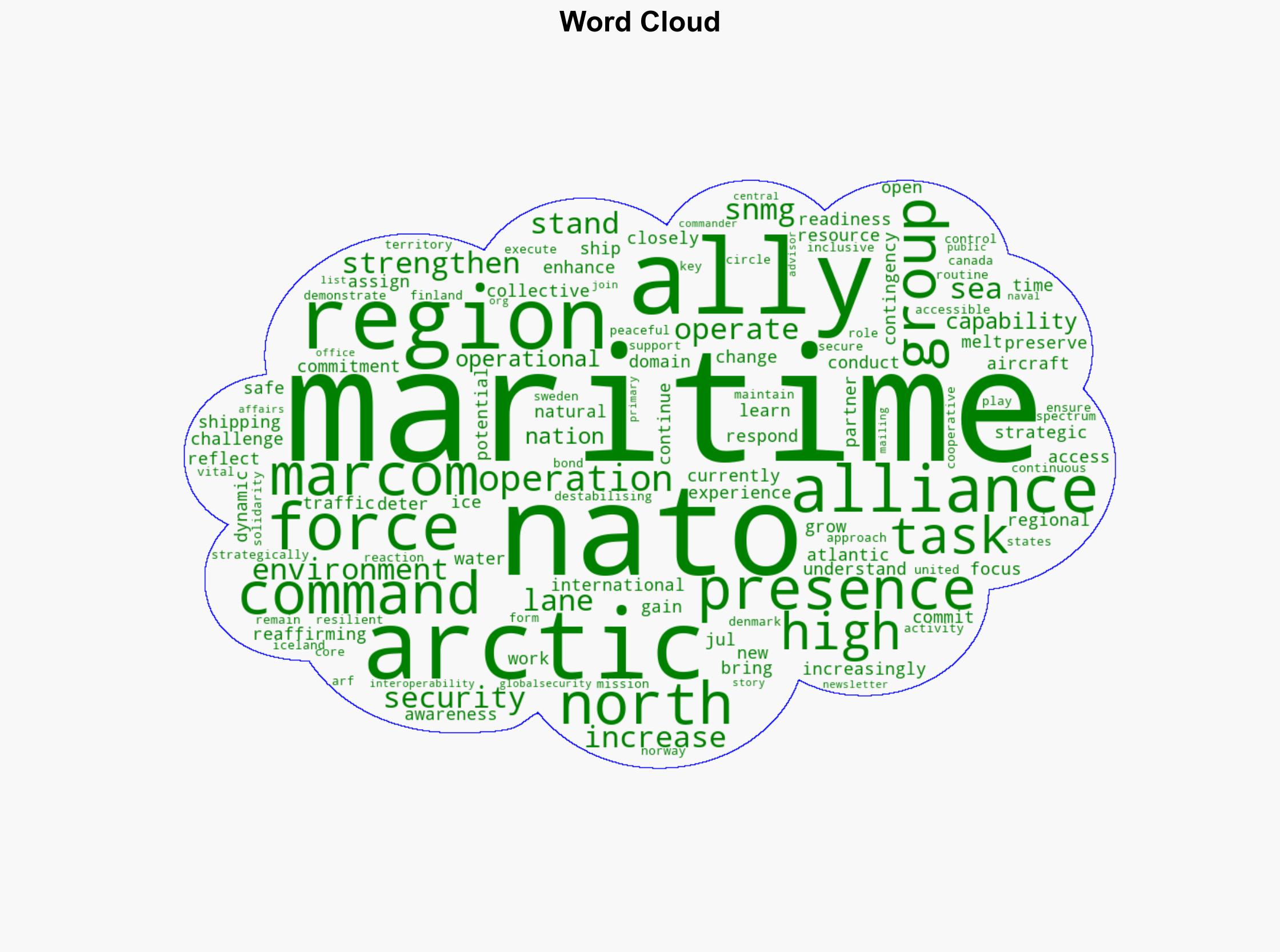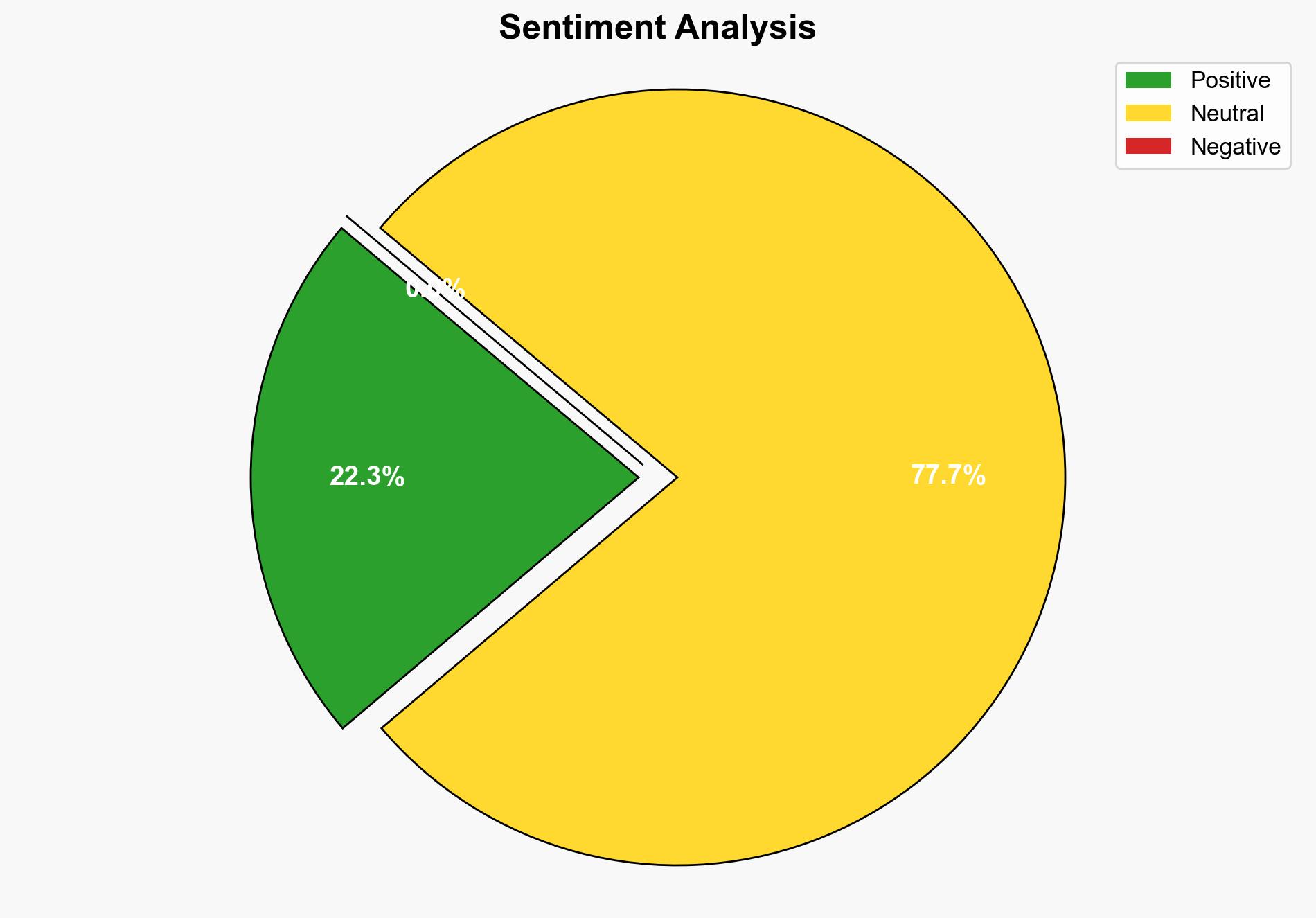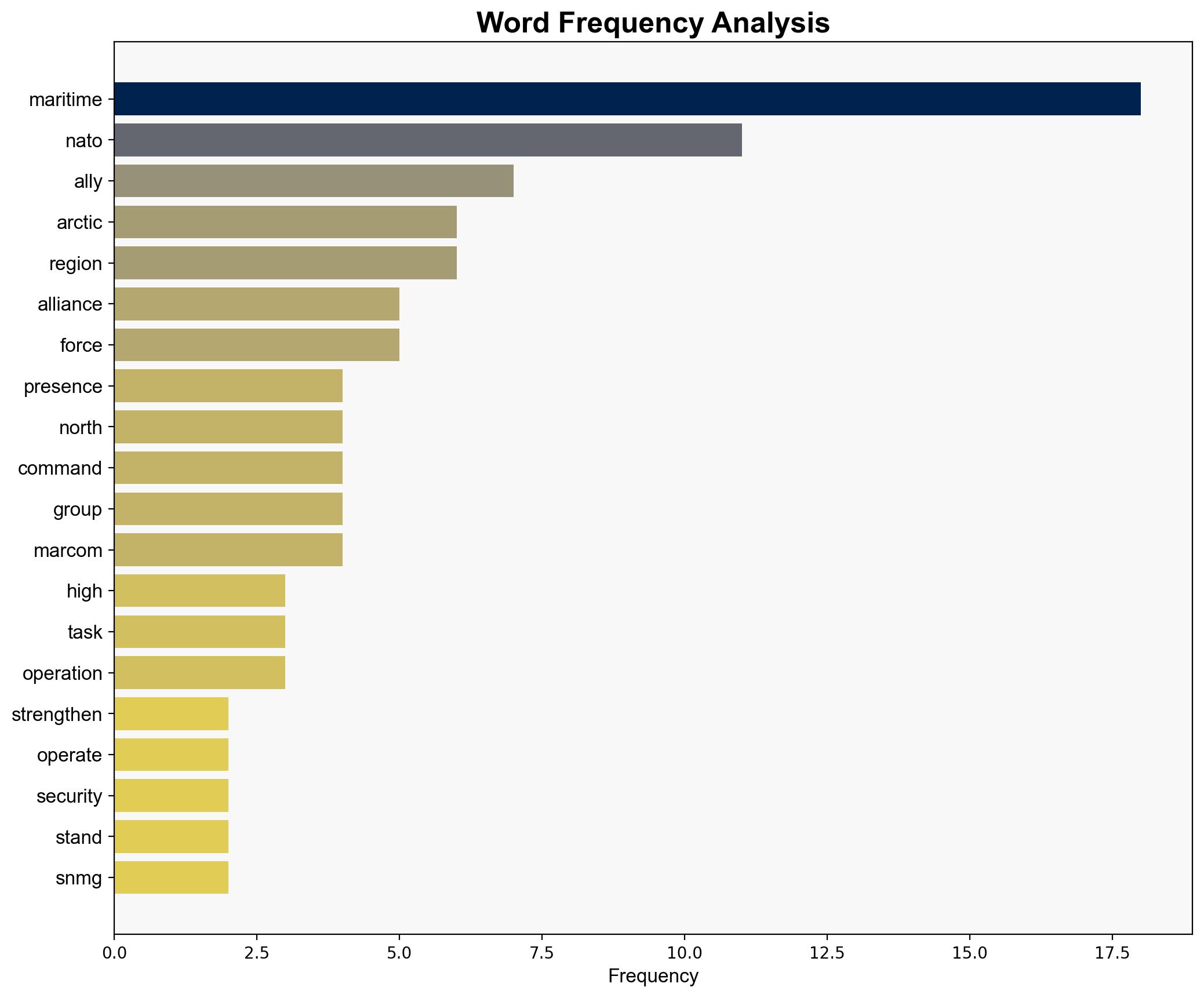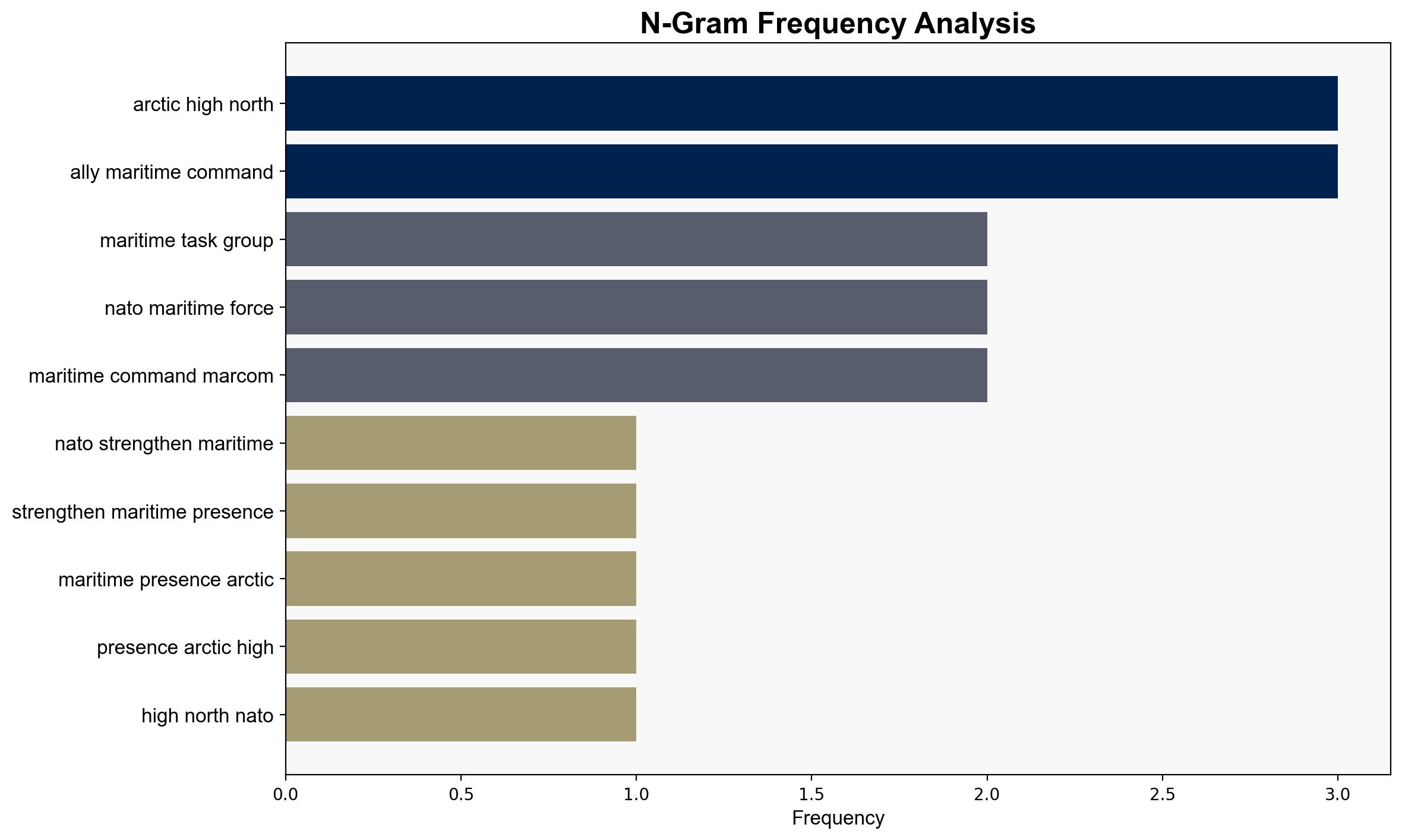NATO strengthens maritime presence in the Arctic and High North – Globalsecurity.org
Published on: 2025-07-29
Intelligence Report: NATO strengthens maritime presence in the Arctic and High North – Globalsecurity.org
1. BLUF (Bottom Line Up Front)
NATO’s increased maritime presence in the Arctic and High North is a strategic move to enhance regional security and readiness, likely in response to geopolitical shifts and environmental changes. The most supported hypothesis is that NATO aims to deter potential adversaries and secure new shipping lanes. Confidence level: Moderate. Recommended action: Strengthen diplomatic engagements with Arctic nations to ensure cooperative security measures.
2. Competing Hypotheses
– **Hypothesis 1**: NATO’s maritime operations are primarily aimed at deterring Russian influence and military activities in the Arctic, given the strategic importance of the region and recent geopolitical tensions.
– **Hypothesis 2**: The operations are focused on securing new shipping routes and access to natural resources as Arctic ice melts, with a secondary goal of environmental monitoring and disaster response readiness.
Using ACH 2.0, Hypothesis 1 is better supported due to the historical context of NATO-Russia relations and recent military activities in the region. However, Hypothesis 2 remains plausible given the economic interests at stake.
3. Key Assumptions and Red Flags
Assumptions include the belief that Russia poses a significant threat in the Arctic and that NATO’s presence will effectively deter aggression. A red flag is the lack of specific mention of Russian activities in the source, which could indicate either an omission or an underestimation of other regional players. Additionally, the assumption that increased presence will not provoke further tensions needs scrutiny.
4. Implications and Strategic Risks
The increased NATO presence could lead to heightened tensions with Russia, potentially escalating into military confrontations. Economically, securing shipping lanes could benefit global trade but might also lead to disputes over resource claims. Cybersecurity risks may increase as adversaries seek to disrupt NATO operations. Geopolitically, this move could strain relations with non-NATO Arctic nations.
5. Recommendations and Outlook
- Enhance intelligence-sharing mechanisms with Arctic nations to build a comprehensive security framework.
- Engage in diplomatic talks with Russia to mitigate potential conflicts and explore cooperative security measures.
- Scenario Projections:
- Best: Cooperative security framework established, leading to stable Arctic operations.
- Worst: Military confrontation with Russia, disrupting global shipping and trade.
- Most Likely: Continued strategic posturing with occasional diplomatic engagements.
6. Key Individuals and Entities
No specific individuals are mentioned in the source text. Key entities include NATO, MARCOM, and Arctic Circle nations such as Canada, Denmark, Finland, Iceland, Norway, Sweden, and the United States.
7. Thematic Tags
national security threats, regional focus, geopolitical strategy, Arctic security





